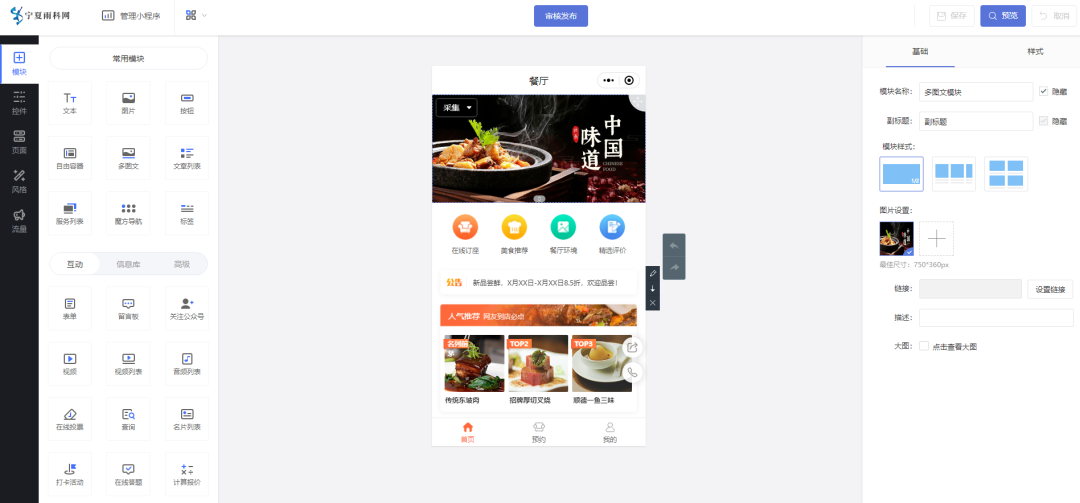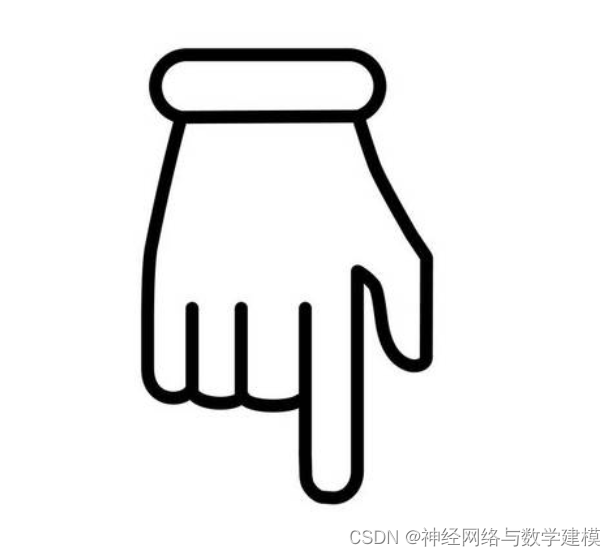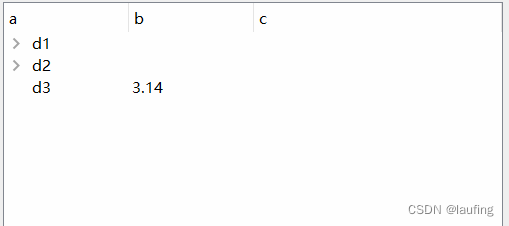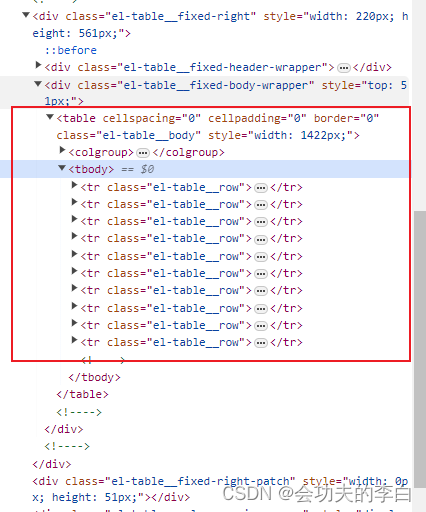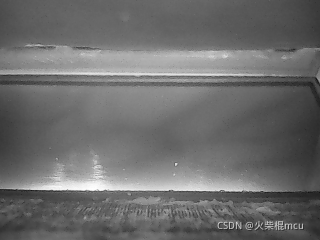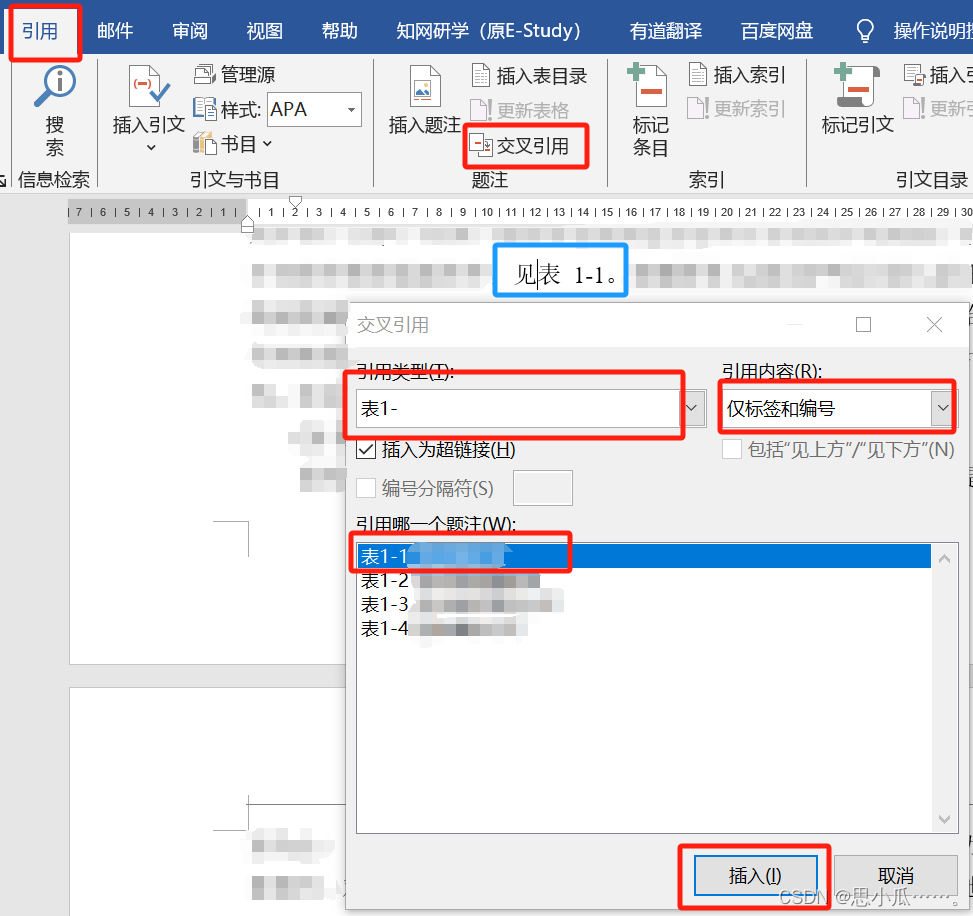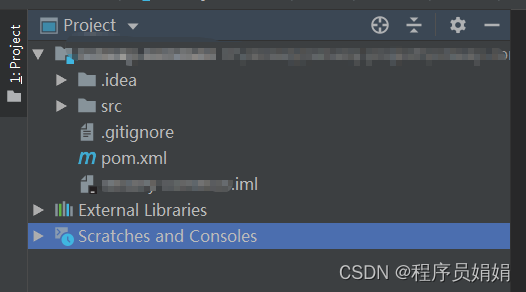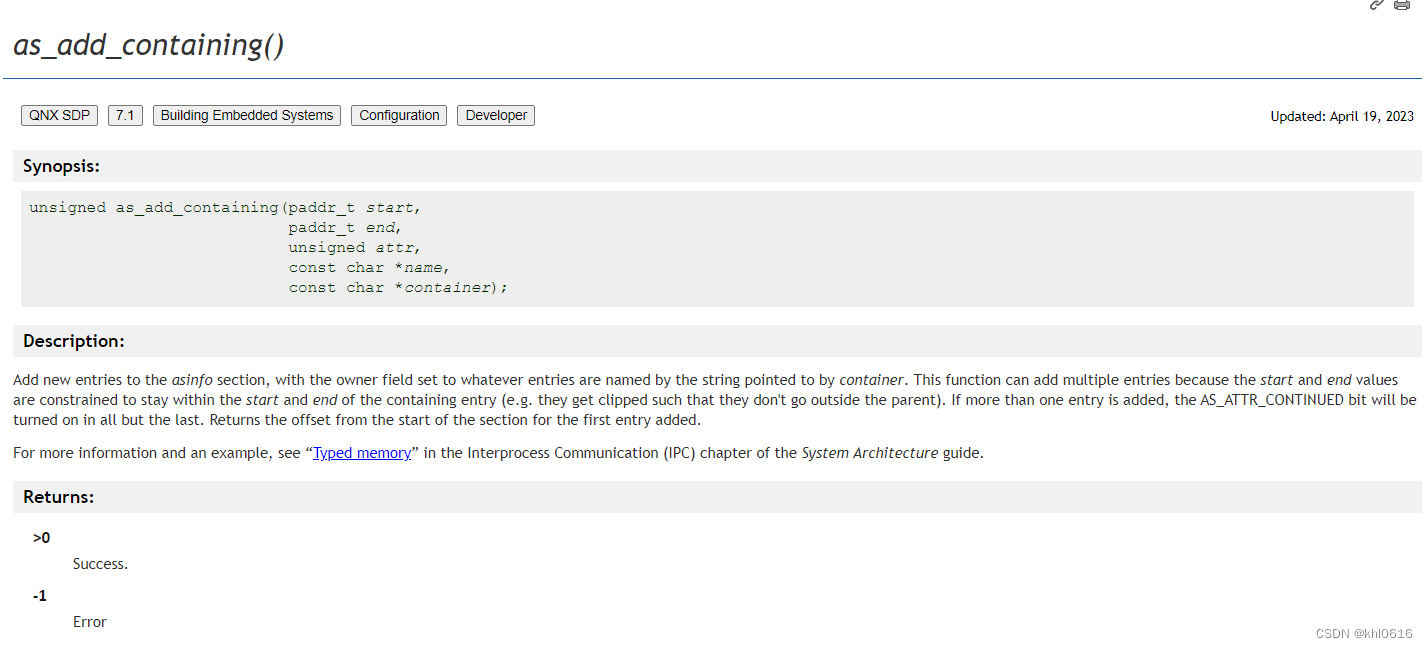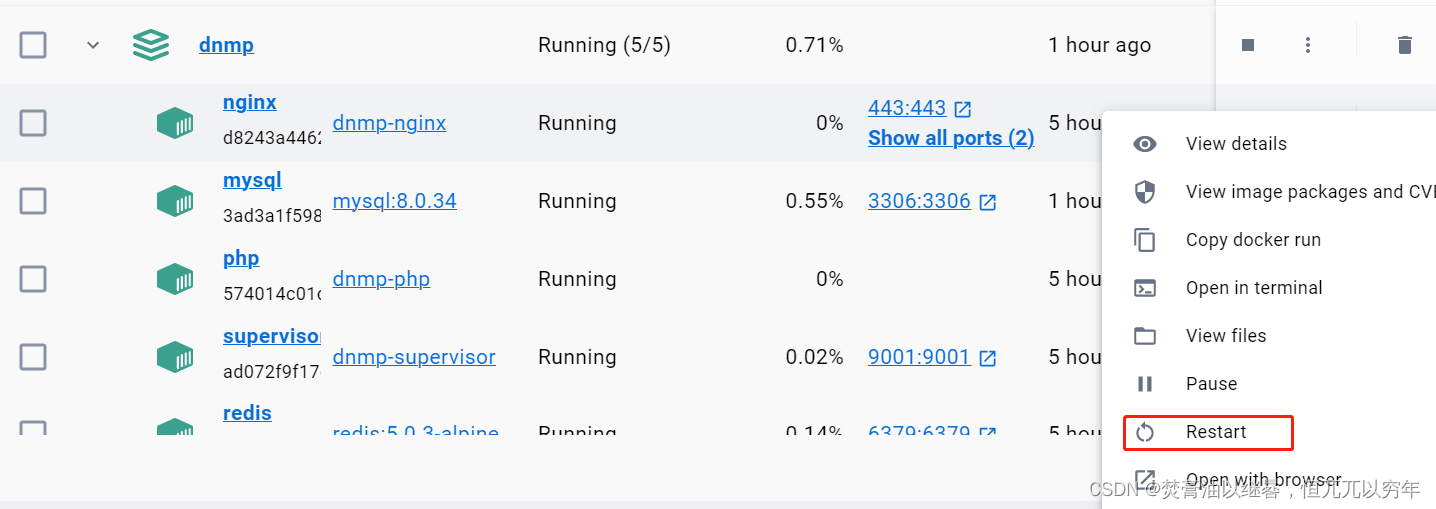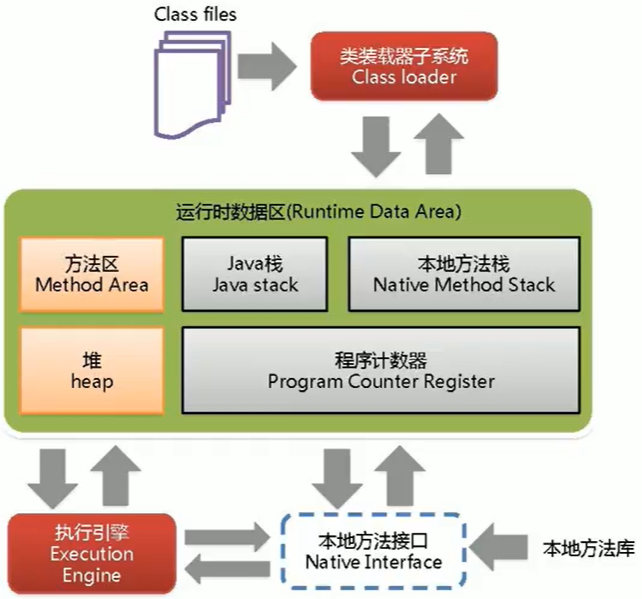PyTorch训练代码和DETR(DEDetection-TRansformer)的预训练模型。我们用Transformer替换了完全复杂的手工制作的对象检测管道,并将Faster R-CNN与ResNet-50匹配,使用一半的计算能力(FLOP)和相同数量的参数在COCO上获得42个AP。
官方项目地址在这里,如下所示:

可以看到目前已经收获了超过1.2w的star量,还是很不错的了。
DETR整体数据流程示意图如下所示:

官方也提供了对应的预训练模型,可以自行使用:

首先按照README基础操作按照配置环境,如下所示:
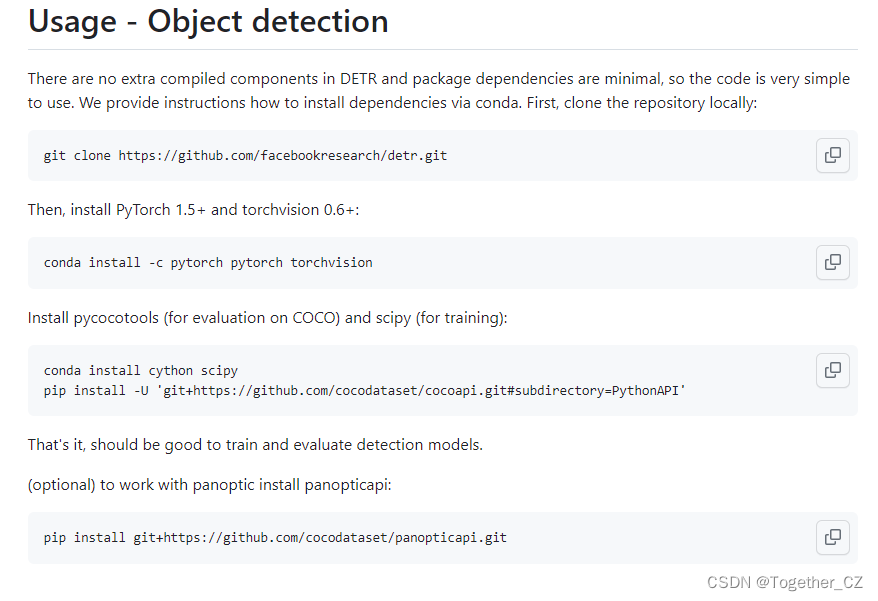
相关的预处理内容在我前面的博文中都有涉及,这里就不再展开介绍了。
DETR (DEtection TRansformer) 是一种基于Transformer架构的端到端目标检测模型。与传统的基于区域提议的目标检测方法(如Faster R-CNN)不同,DETR采用了全新的思路,将目标检测问题转化为一个序列到序列的问题,通过Transformer模型实现目标检测和目标分类的联合训练。
DETR的工作流程如下:
- 输入图像通过卷积神经网络(CNN)提取特征图。
- 特征图作为编码器输入,经过一系列的编码器层得到图像特征的表示。
- 目标检测问题被建模为一个序列到序列的转换任务,其中编码器的输出作为解码器的输入。
- 解码器使用自注意力机制(self-attention)对编码器的输出进行处理,以获取目标的位置和类别信息。
- 最终,DETR通过一个线性层和softmax函数对解码器的输出进行分类,并通过一个线性层预测目标框的坐标。
DETR的优点包括:
- 端到端训练:DETR模型能够直接从原始图像到目标检测结果进行端到端训练,避免了传统目标检测方法中复杂的区域提议生成和特征对齐的过程,简化了模型的设计和训练流程。
- 不受固定数量的目标限制:DETR可以处理变长的输入序列,因此不受固定数量目标的限制。这使得DETR能够同时检测图像中的多个目标,并且不需要设置预先确定的目标数量。
- 全局上下文信息:DETR通过Transformer的自注意力机制,能够捕捉到图像中不同位置的目标之间的关系,提供了更大范围的上下文信息。这有助于提高目标检测的准确性和鲁棒性。
然而,DETR也存在一些缺点:
- 计算复杂度高:由于DETR采用了Transformer模型,它在处理大尺寸图像时需要大量的计算资源,导致其训练和推理速度相对较慢。
- 对小目标的检测性能较差:DETR模型在处理小目标时容易出现性能下降的情况。这是因为Transformer模型在处理小尺寸目标时可能会丢失细节信息,导致难以准确地定位和分类小目标。
现在我们来对比一下DETR和YOLO系列以及SSD等知名目标检测模型的优劣:
YOLO系列(包括YOLOv1、YOLOv2、YOLOv3和YOLOv4)和SSD是基于锚框的目标检测方法。它们的优点包括:
- 实时性能较好:YOLO系列和SSD通过使用锚框和特征金字塔网络,能够在保持较高检测准确性的同时,实现实时目标检测。
- 对小目标的检测效果较好:锚框的使用使得YOLO系列和SSD对小目标的检测能力相对较强。
- 计算效率高:相对于DETR的Transformer模型,YOLO系列和SSD的计算复杂度较低,因此训练和推理速度更快。
然而,YOLO系列和SSD也存在一些缺点:
- 定位精度相对较低:由于采用了固定数量的锚框,YOLO系列和SSD在目标定位方面的精度相对较低。特别是对于小尺寸目标,容易出现边界框偏移或不完整的情况。
- 对密集目标的处理困难:由于锚框的固定尺寸和位置,YOLO系列和SSD在处理密集目标(多个目标在空间上重叠)时可能存在困难,容易发生目标漏检或重叠框的问题。
综上所述,DETR相对于YOLO系列和SSD等基于锚框的目标检测模型具有端到端训练、不受固定目标数量限制和全局上下文信息等优点。然而,DETR在计算复杂度和对小目标的检测性能方面存在一些限制。对于实时性能要求高且注重目标定位精度的场景,YOLO系列和SSD可能是更好的选择。而对于需要全局上下文信息和不受固定目标数量限制的场景,DETR可能更适合。选择适合的目标检测模型应根据具体应用场景和需求进行评估。
首先看下整体效果:
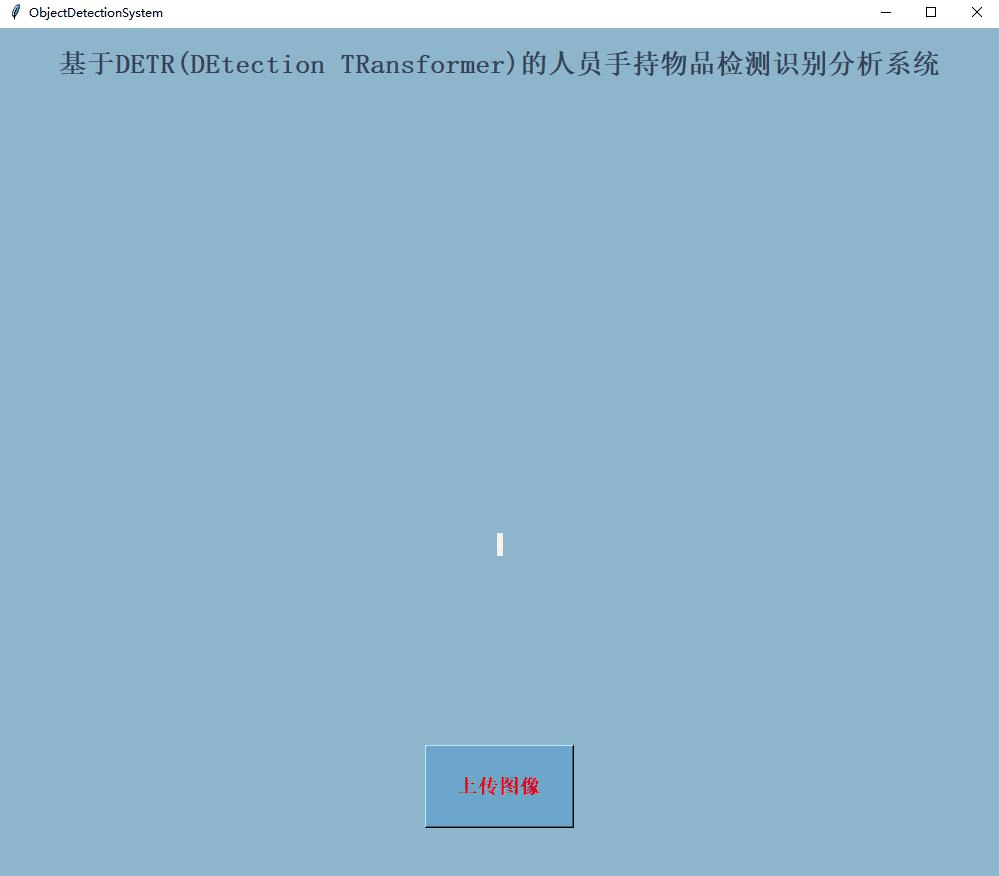
接下来看下数据集:

需要借助于脚本转化处理为coco格式的:

这块网上现成的教程自行百度即可。
默认是100次epoch的迭代计算,看下结果详情,如下所示:

训练完成截图如下所示:

整体训练过程可视化核心实现如下所示:
def plot_logs(logs, fields=('class_error', 'loss_bbox_unscaled', 'mAP'), ewm_col=0, log_name='log.txt'):
'''
Function to plot specific fields from training log(s). Plots both training and test results.
:: Inputs - logs = list containing Path objects, each pointing to individual dir with a log file
- fields = which results to plot from each log file - plots both training and test for each field.
- ewm_col = optional, which column to use as the exponential weighted smoothing of the plots
- log_name = optional, name of log file if different than default 'log.txt'.
:: Outputs - matplotlib plots of results in fields, color coded for each log file.
- solid lines are training results, dashed lines are test results.
'''
func_name = "plot_utils.py::plot_logs"
# verify logs is a list of Paths (list[Paths]) or single Pathlib object Path,
# convert single Path to list to avoid 'not iterable' error
if not isinstance(logs, list):
if isinstance(logs, PurePath):
logs = [logs]
print(f"{func_name} info: logs param expects a list argument, converted to list[Path].")
else:
raise ValueError(f"{func_name} - invalid argument for logs parameter.\n \
Expect list[Path] or single Path obj, received {type(logs)}")
# Quality checks - verify valid dir(s), that every item in list is Path object, and that log_name exists in each dir
for i, dir in enumerate(logs):
if not isinstance(dir, PurePath):
raise ValueError(f"{func_name} - non-Path object in logs argument of {type(dir)}: \n{dir}")
if not dir.exists():
raise ValueError(f"{func_name} - invalid directory in logs argument:\n{dir}")
# verify log_name exists
fn = Path(dir / log_name)
if not fn.exists():
print(f"-> missing {log_name}. Have you gotten to Epoch 1 in training?")
print(f"--> full path of missing log file: {fn}")
return
# load log file(s) and plot
dfs = [pd.read_json(Path(p) / log_name, lines=True) for p in logs]
fig, axs = plt.subplots(ncols=len(fields), figsize=(16, 5))
for df, color in zip(dfs, sns.color_palette(n_colors=len(logs))):
for j, field in enumerate(fields):
if field == 'mAP':
coco_eval = pd.DataFrame(
np.stack(df.test_coco_eval_bbox.dropna().values)[:, 1]
).ewm(com=ewm_col).mean()
axs[j].plot(coco_eval, c=color)
else:
df.interpolate().ewm(com=ewm_col).mean().plot(
y=[f'train_{field}', f'test_{field}'],
ax=axs[j],
color=[color] * 2,
style=['-', '--']
)
for ax, field in zip(axs, fields):
ax.legend([Path(p).name for p in logs])
ax.set_title(field)
def plot_precision_recall(files, naming_scheme='iter'):
if naming_scheme == 'exp_id':
# name becomes exp_id
names = [f.parts[-3] for f in files]
elif naming_scheme == 'iter':
names = [f.stem for f in files]
else:
raise ValueError(f'not supported {naming_scheme}')
fig, axs = plt.subplots(ncols=2, figsize=(16, 5))
for f, color, name in zip(files, sns.color_palette("Blues", n_colors=len(files)), names):
data = torch.load(f)
# precision is n_iou, n_points, n_cat, n_area, max_det
precision = data['precision']
recall = data['params'].recThrs
scores = data['scores']
# take precision for all classes, all areas and 100 detections
precision = precision[0, :, :, 0, -1].mean(1)
scores = scores[0, :, :, 0, -1].mean(1)
prec = precision.mean()
rec = data['recall'][0, :, 0, -1].mean()
print(f'{naming_scheme} {name}: mAP@50={prec * 100: 05.1f}, ' +
f'score={scores.mean():0.3f}, ' +
f'f1={2 * prec * rec / (prec + rec + 1e-8):0.3f}'
)
axs[0].plot(recall, precision, c=color)
axs[1].plot(recall, scores, c=color)
axs[0].set_title('Precision / Recall')
axs[0].legend(names)
axs[1].set_title('Scores / Recall')
axs[1].legend(names)
return fig, axs结果如下所示:

对应模型评估指标如下所示:

感兴趣的话可以自行动手实践尝试下!


